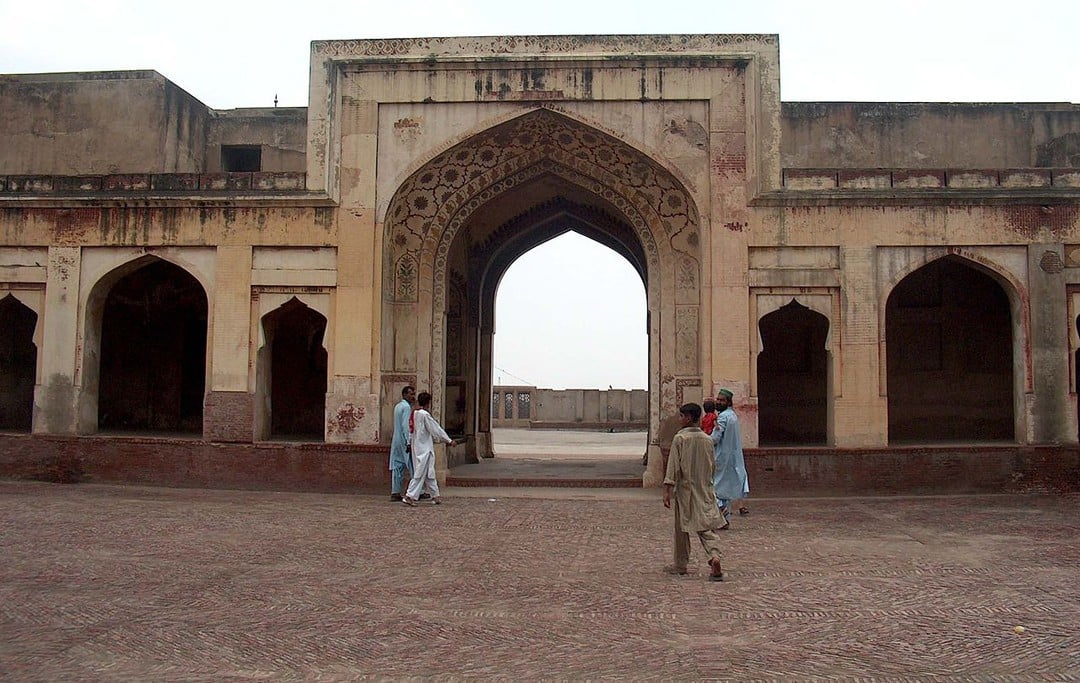
Believed to be the cultural capital of Pakistan, why is Lahore not trying harder to hold on to its identity?

Around 2,000 years ago, Lahore was a colony of Kangra Hills Kingdom and a cut-off town on the trade route to Delhi. It is a land which has simultaneously known war and flourishment; it has been attacked, vanquished, destroyed, and rebuilt, time and again.
Lahore is believed to be the cultural capital of Pakistan with a rich history, but then why are there so many neglected monuments? Why is Lahore not trying harder to hold on to its identity?
For years, we’ve been taught that Lahore is a unique city because of its history, it having been a seat of the Mughal Empire, the Sikh Empire, the capital of Punjab in Mahmud Ghaznavi’s times (11th century AD) and, eventually, the British Empire. After moving back to Lahore recently, my family and I happened to take a tour around the city. Having spent most of our life abroad, we thought this was a good idea to connect with our city, whose history and culture had always fascinated me.
After visiting a few historical places, their lack of maintenance got me thinking about the importance of preservation of these monuments for the future generations. The monuments that were once held and shown with pride and joy have now become mere echoes of their lost grandeur.
Historical monuments like Badshahi Masjid, Sheesh Mahal, Shahi Qila, Shalimar Gardens, to name a few, are meant to serve a visual reminder of the past. Each building has a historically rich tale to tell to its visitors and bring them closer to the relics of various civilisations that had once existed in the pre-historic times.
In my opinion, the 20th-century generation was probably the last to experience the leftover beauty of these places which, by default, means there will be nothing left for the future generations to familiarise themselves and bond with in their city. Especially those who have lived abroad their entire life would not know of these places if these monuments were not preserved properly.
Historical monuments are an important part of a nation, as they define its progress and heritage as well as set an example for the succeeding era. Craftsmanship and the architecture of the buildings serve as a documentation of the past, particularly that belonging to the Mughal period.
Unfortunately, from what I saw at the Shalimar Gardens and Shahi Qila is that they are facing a host of issues ranging from government neglect, environmental degradation, and natural decay. Despite efforts by conservationists, some aspects of these monuments that possess sheer historical importance have been destroyed. Shalimar Gardens, for instance, one of the finest Mughal garden of South Asia, was built by Shah Jahan in 1641-1642. Besides its long khayabans and the three-level terraces, an important feature of the place used to be its detailed water supply. The water flowing from the Ravi river would provide water for about 300 fountains to function within the garden. Then came the Sikh period (1749-1849) which caused severe damages to the place which has remained largely neglected since.
Another place that has not been properly preserved is the Sheesh Mahal, located in the north western corner of the Shahi Qila. This part of the fort is not accessible to the general public without a tour guide. Since we were all eager to know what the big deal was, we hired one who told us a lot of things about the spectacular Sheesh Mahal.
As a project, Sheesh Mahal was launched by Jahangir but it was completed by his son Shah Jahan in 1631-1632, we were told. "The most obvious feature of this monument is the awe-inspiring convex mirror mosaic work (ayina kari) done on the interior walls and ceilings. The ceilings had a layer of gypsum plaster applied on the wooden lattice structure sustained by wooden beams. The water seepage from the roof and termite attack deteriorated everything slowly and everything kept falling apart. Even after a conservation project, there was no proper supervision of the place during and after the execution of work; as there were not many proper skilled workers who could carry out the job."
One can say that these monuments are like safe vaults containing centuries old secret treasures. Not only do they connect people with their historical and social legacy, they also give the people a proper understanding of where they came from.